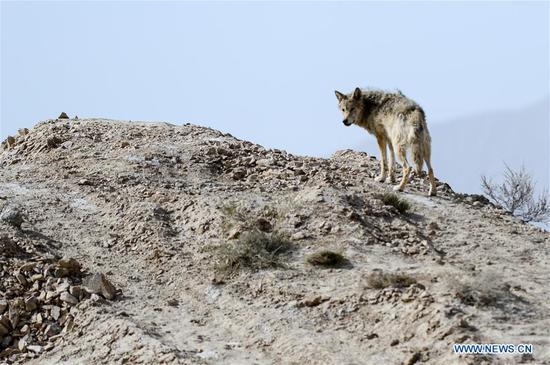
Infrared camera image taken on April 20, 2019 shows an all-white giant panda in the Wolong National Nature Reserve in southwest China's Sichuan Province. (Xinhua)
A rare all-white panda has been captured on camera in the Wolong National Nature Reserve in southwest China's Sichuan Province, the reserve management authorities said on Saturday.
The panda was captured in mid-April by an infrared camera about 2,000 meters above sea level in the wild, the authorities said.
The panda has no spots on its body and its eyes look red. It was crossing the forest at the time.
"Judging from pictures, the panda is an albino, one to two years old," said Li Sheng, a researcher with Peking University and a specialist in bears, who studied the pictures.
The panda is a rare all-white individual in wild pandas, which showed that the albinism genes exist in the wild population of giant pandas in Wolong, he said.
"The panda looked strong and its steps were steady, a sign that the genetic mutation may not have quite impeded its life," Li said, adding that the gender of the panda cannot be decided based on current data.
Albinism exists in different vertebrate species. The albino mutation inhibits melanin synthesis in animal's body. Albino usually does not affect animal's physical makeup and functions. It could make them easier to be discovered and more sensitive to direct sunlight, Li said.
The albino mutation is a recessive gene. Only when the parent pandas both carry such gene, can the baby show the albino traits.
If this white panda would mate with a normal panda, their first generation babies will still be black and white. But their babies, carrying the albino gene, will possibly give birth to all-white pandas if their partners also carry such genes, Li said.
In order to better protect the ecosystems, the Wolong nature reserve has been using infrared cameras to monitor the distribution and activities of wild animals in its seven demonstration areas.
Previously, some rare brown giant pandas were found in China's Qinling Mountains. The cause of the brown fur color was also considered as genetic mutation by some researchers.


















































